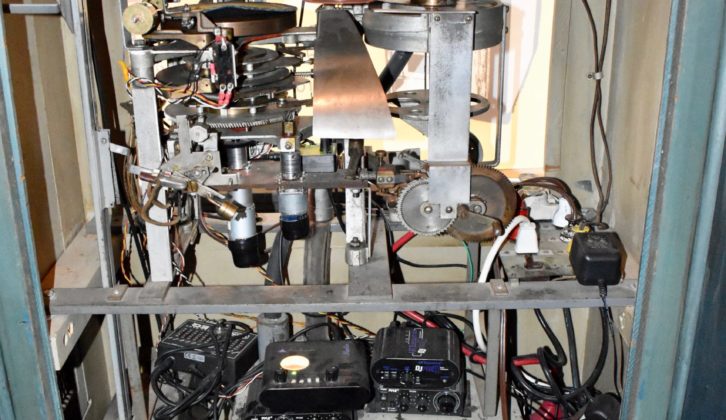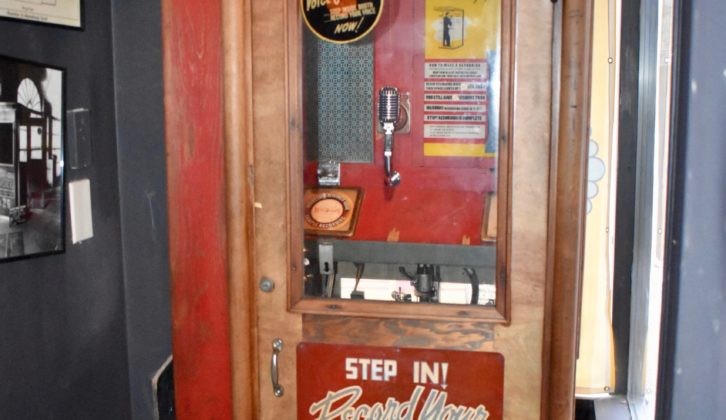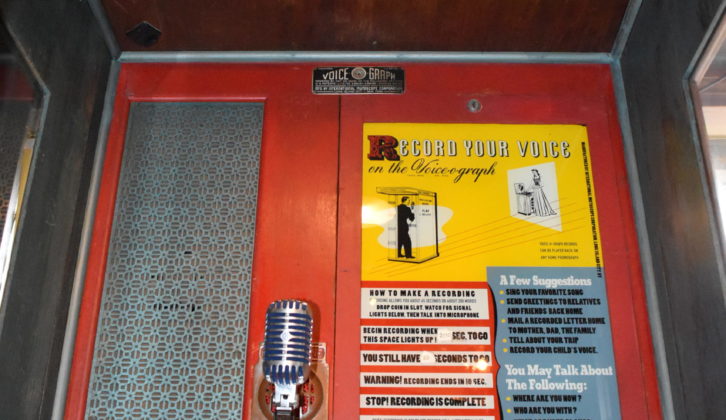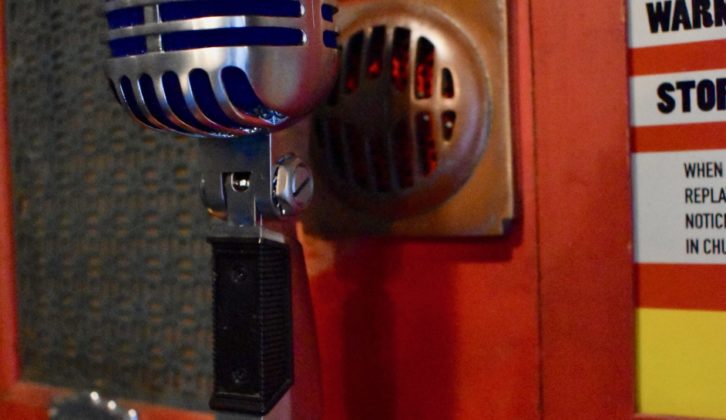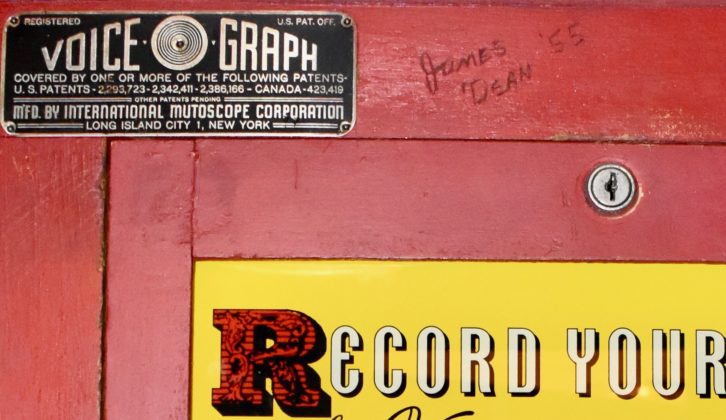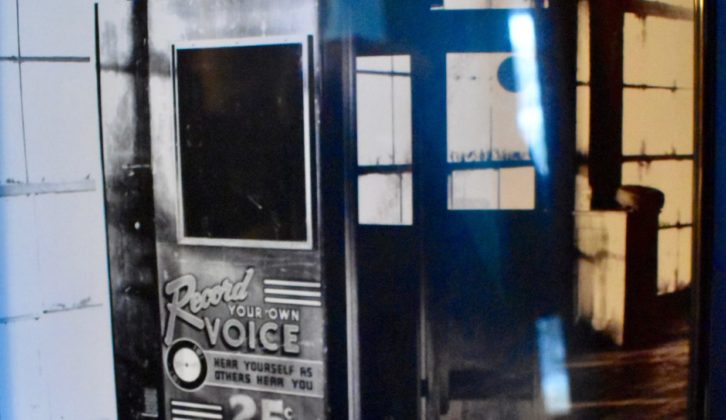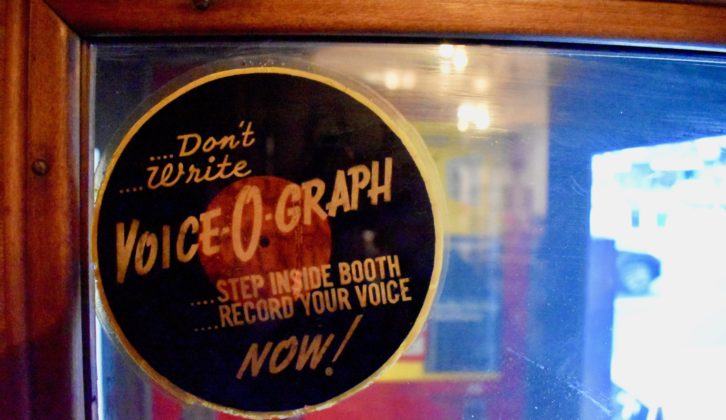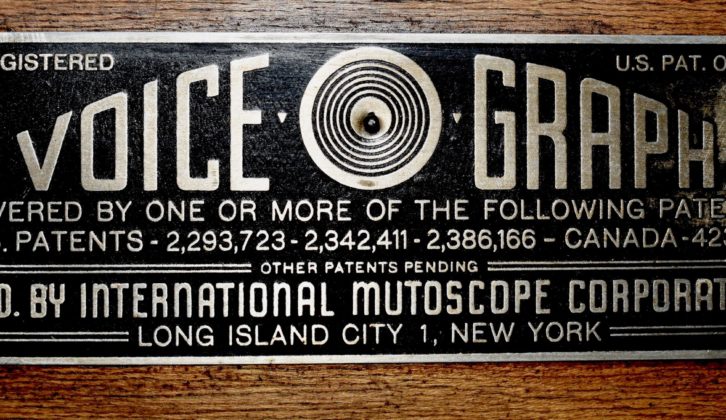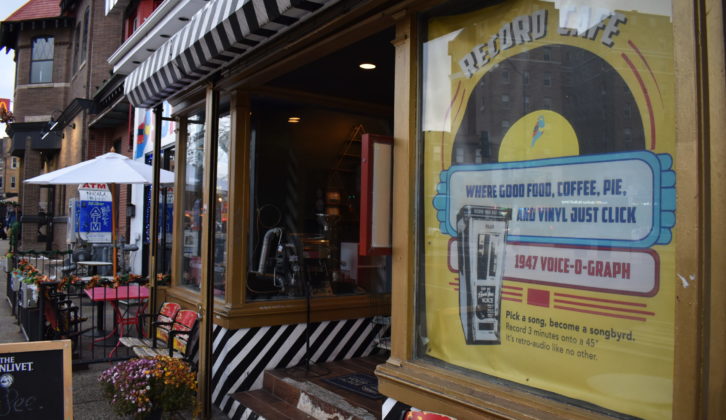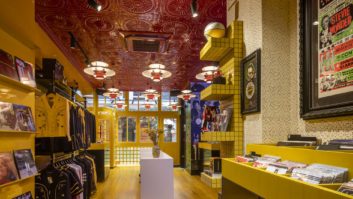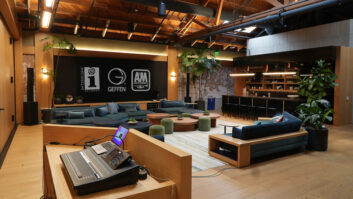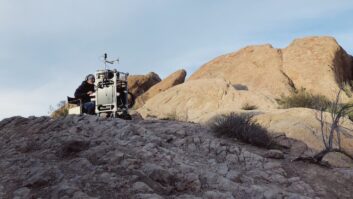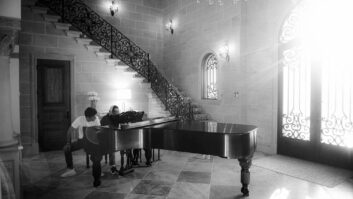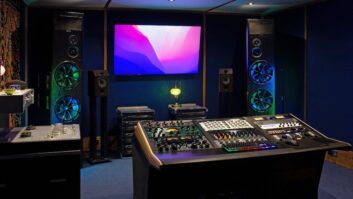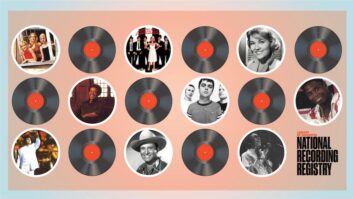When I was in Washington, D.C. recently to host some seminars on podcasting, I checked out a related historical artifact—not in a museum but at Songbyrd Music House and Record Café, which owns an antique vending machine that’s arguably the precursor to podcast technology: The Voice-O-Graph.
INSIDE SONGBYRD’S VOICE-O-GRAPH MACHINE
Introduced in the 1940s, the Voice-O-Graph recorded customers live to a 6-inch vinyl record, lathe-cut right on the spot. For 35 cents (roughly $4 today), people crammed into a wooden vocal booth, recorded themselves for three minutes and 10 seconds, and then watched a record drop out a slot like a pack of gum. While surely some customers sang or performed, the machines were meant to record talking—a 1940s answer to podcasting.
“With old Voice-O-Graph records, there’s a lot of war recordings and people who moved cross-country sending them to relatives back home,” says Alisha Edmonson, who, with partner Joe Lapan, learned of the machines while planning Songbyrd in 2014. While looking to thematically connect a business equal parts venue, café and record shop, they caught musician Jack White on TV talking about his own Voice-O-Graph, located at his Third Man Records facility in Nashville. Instantly, they knew the machine would tie Songbyrd together; the only problem was finding one.
Voice-O-Graphs are incredibly rare, but they were never abundant to begin with—fewer than 400 were in circulation at their peak. Additionally, often placed outdoors at boardwalks and fairgrounds, the plywood booths deteriorated from the elements until they were simply thrown out. Undaunted, Edmonson and Lapan managed to find one for sale in Maryland. Edmonson recalls, “Joe saw it, came back and said, ‘That thing’s amazing! We can’t afford it, but it’s amazing!’”
Eventually they did afford it, but the contraption was far from plug-and-play. “It worked when we got it, and once we opened, it didn’t work,” she says. Sometimes it would record perfectly; other times, it would only cut half a record or not at all. She spent a year troubleshooting with a NASA engineer (they have those in Washington) and eventually made a breakthrough: “We were working at 1 AM, when all of a sudden, I asked, ‘It’s a tube amp—how long does a tube amp take to warm up?’ They were set incorrectly, so they weren’t getting enough time to warm up.”
Maintaining a Voice-O-Graph requires a lot of guesswork like that. “We’re the only small, independent place that owns one,” says Edmonson. “All the others are recording studios or people with cool engineers. We have me. I’m an architect by trade and I definitely understand and love engineering, but this is a different feat.”
Today, she knows the Voice-O-Graph well. The original lathe stylus was replaced by a diamond and now a custom ruby needle (“Ruby cuts best into today’s hard polycarbonate,” she reports). The 6-inch vinyl blanks are sourced from Denmark, and Edmonson has reduced recording time to 2:30 to accommodate cutting a wider groove. Examining its interior, visitors will discover some modern parts—an ART Tube MP Studio micpre, MXR EQ pedal and a Shure Super 55 Deluxe mic among them—but most of the opulent coin-op (Serial Number 47) remains as it was when first used decades ago, safe from the weather inside Grauman’s Chinese Theatre in Hollywood. In fact, there’s only one thing it wasn’t safe from: The penknife of James Dean—the movie legend carved his name twice inside the booth.
